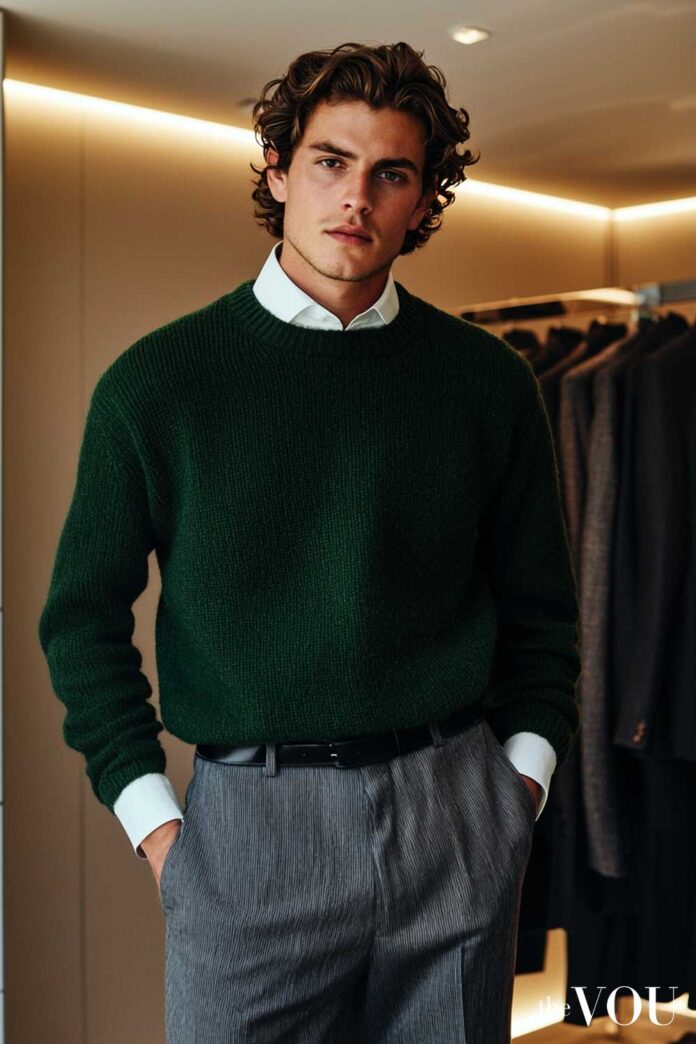Understanding your personal colour palette is not a matter of fleeting fashion; it is a fundamental pillar of commanding presence.
The right colours will sharpen your features, project vitality, and signal an innate understanding of aesthetics. The wrong ones will drain you of life, making you appear tired and indistinct.
Mastering this is a non-negotiable for the man who takes his image seriously. Fortunately, you do not require an expensive stylist to decode your personal spectrum. The tools and methods are readily available.
This guide provides the definitive process for identifying your colour palette at no cost, empowering you to build a wardrobe that is not just stylish, but strategically effective.
What Is A Personal Colour Palette?
A personal colour palette is a curated selection of hues that harmonise perfectly with your natural colouring.
It is determined by the specific interplay of your skin’s undertone, your natural hair colour, and the shade of your eyes.
The system organises these characteristics into four distinct “seasons”; Winter, Summer, Autumn, and Spring. Each season corresponds to a specific family of colours that will inherently complement you.
Identifying your season is the key to unlocking a wardrobe that works for you, ensuring every piece you invest in enhances your appearance rather than detracts from it.
The Four Main Colour Seasons
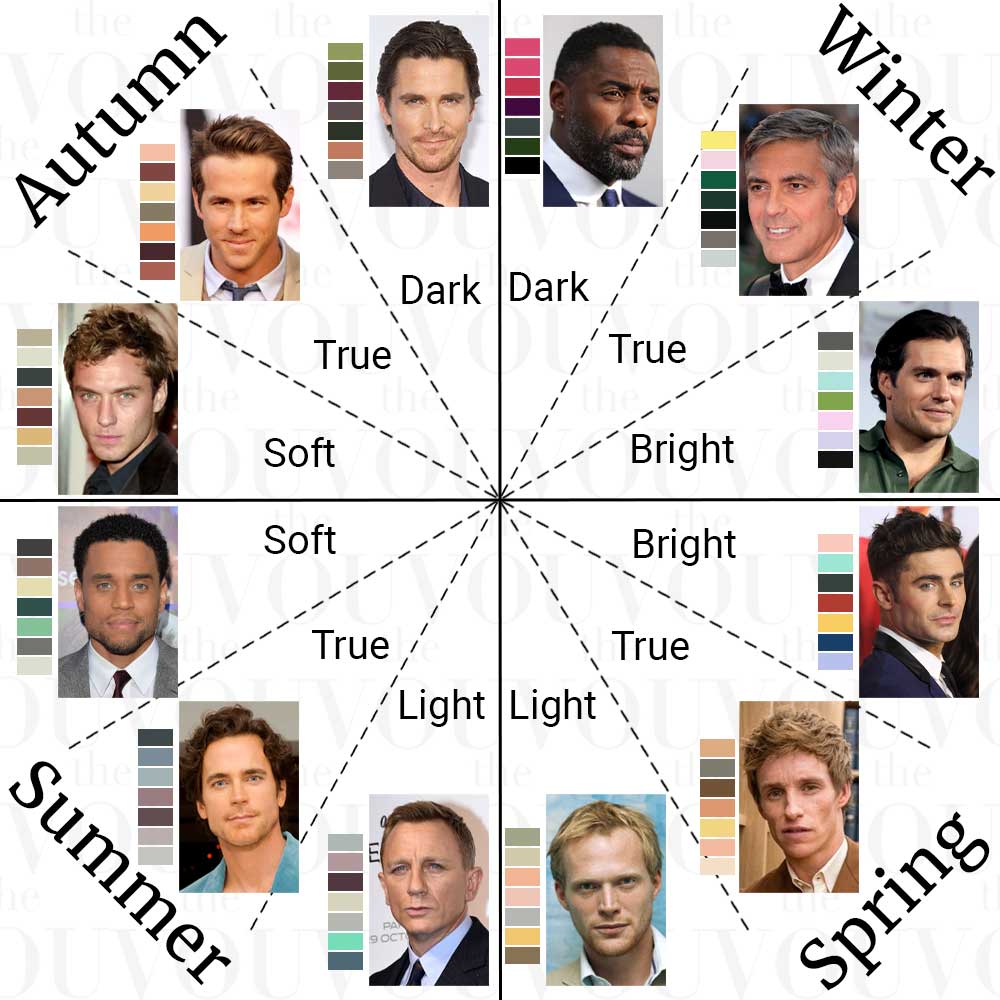
The seasonal analysis framework is the most effective method for categorising personal colouring. It simplifies colour theory into four archetypes, each with a distinct set of characteristics and a corresponding palette.
Your task is to identify which of these archetypes aligns with your natural features. This is an exercise in objective self-assessment.
Winter Colour Palette

The Winter palette is defined by high contrast and cool, blue-based undertones.
Men in this category typically have dark hair (from dark brown to black) and skin that can range from very fair to deep olive or dark. The key is the sharp contrast between hair, skin, and often bright, clear eyes.
Your colours are bold, crisp, and intense. Invest in true black, pure optical white, deep navy, and rich jewel tones like emerald green, ruby red, and sapphire blue. Avoid muted, earthy tones which will dilute your natural intensity.
Summer Colour Palette
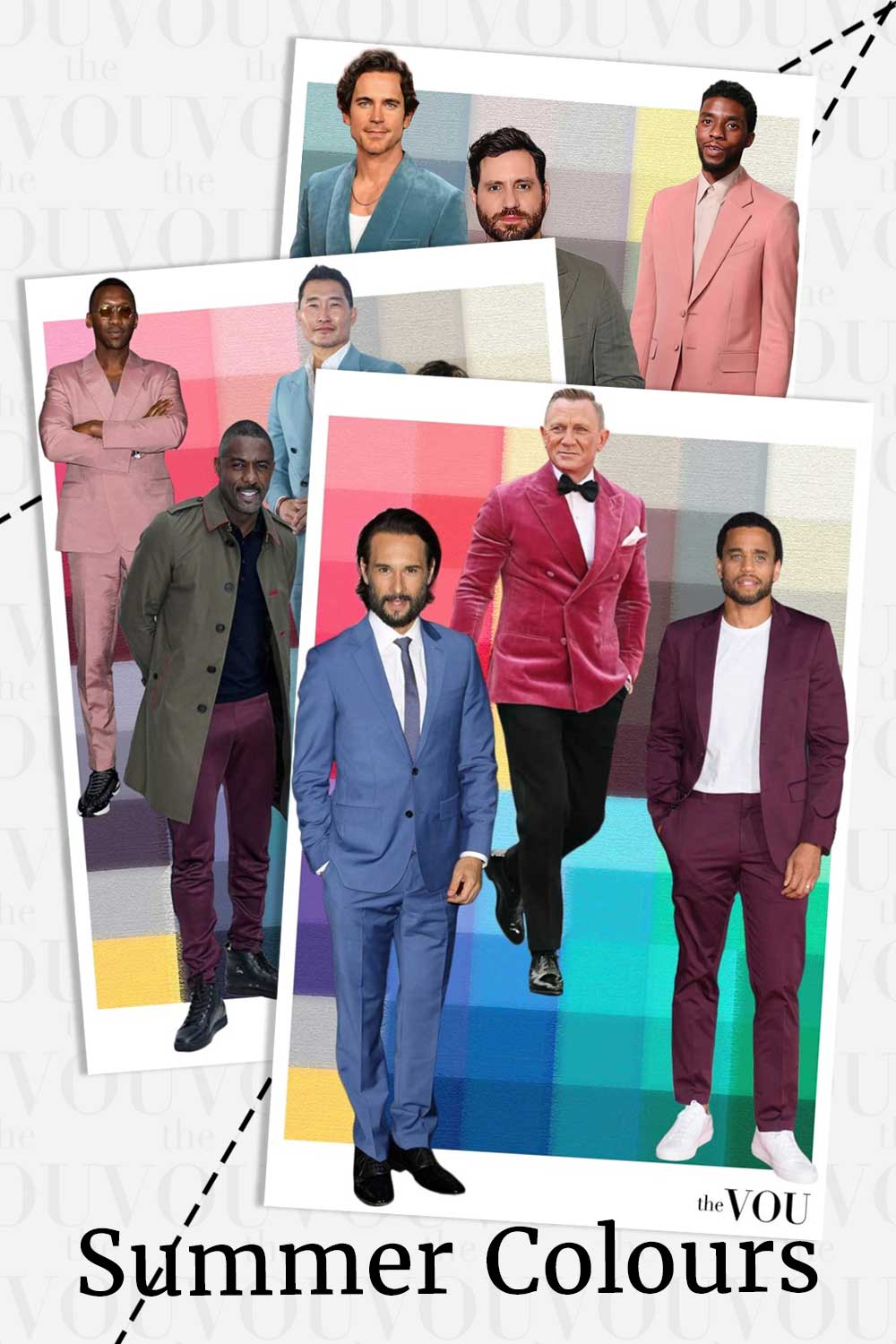
The Summer palette is characterised by low contrast and cool, blue-based undertones.
Hair is typically light; from ash blonde to light or mousey brown, and skin is often fair with a pinkish tint. The overall appearance is softer and more blended than a Winter’s.
Your most flattering colours are muted, soft, and elegant. Think of sophisticated pastels and dusty shades like powder blue, soft grey, lavender, and muted rose. Steer clear of harsh, vibrant colours that will overwhelm your refined colouring.
Autumn Colour Palette
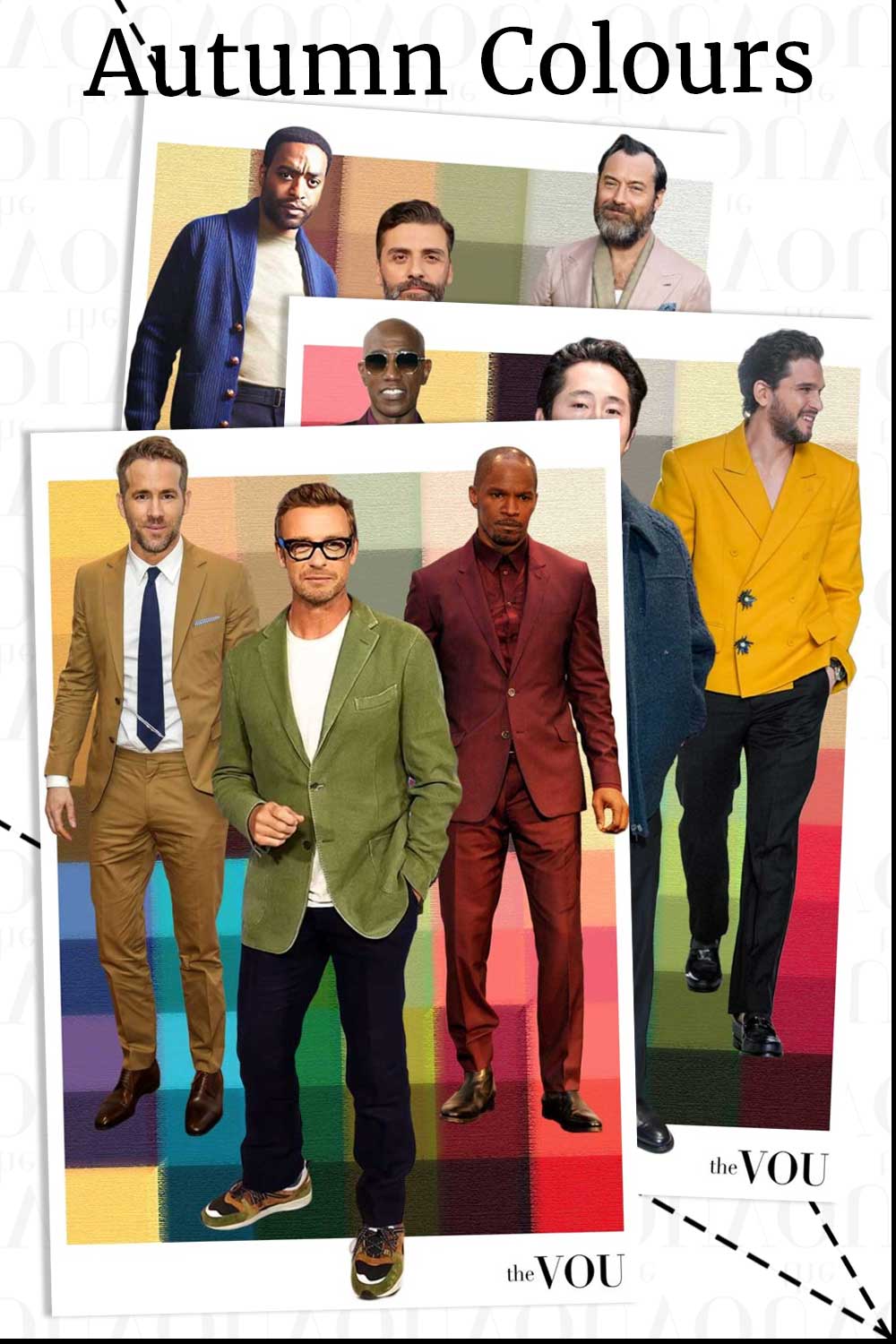
The Autumn palette is governed by warm, golden undertones and is typically rich and muted in its intensity.
This profile often includes men with hair that has red or golden highlights, from auburn to warm brown, and a golden-beige or coppery skin tone. Eye colour is usually in the warm spectrum; think hazel, olive green, or warm brown.
Your ideal colours are earthy and deep. Build your wardrobe around shades like olive green, terracotta, mustard yellow, deep brown, and warm beige. Avoid cool, icy pastels which will clash with your natural warmth.
Spring Colour Palette
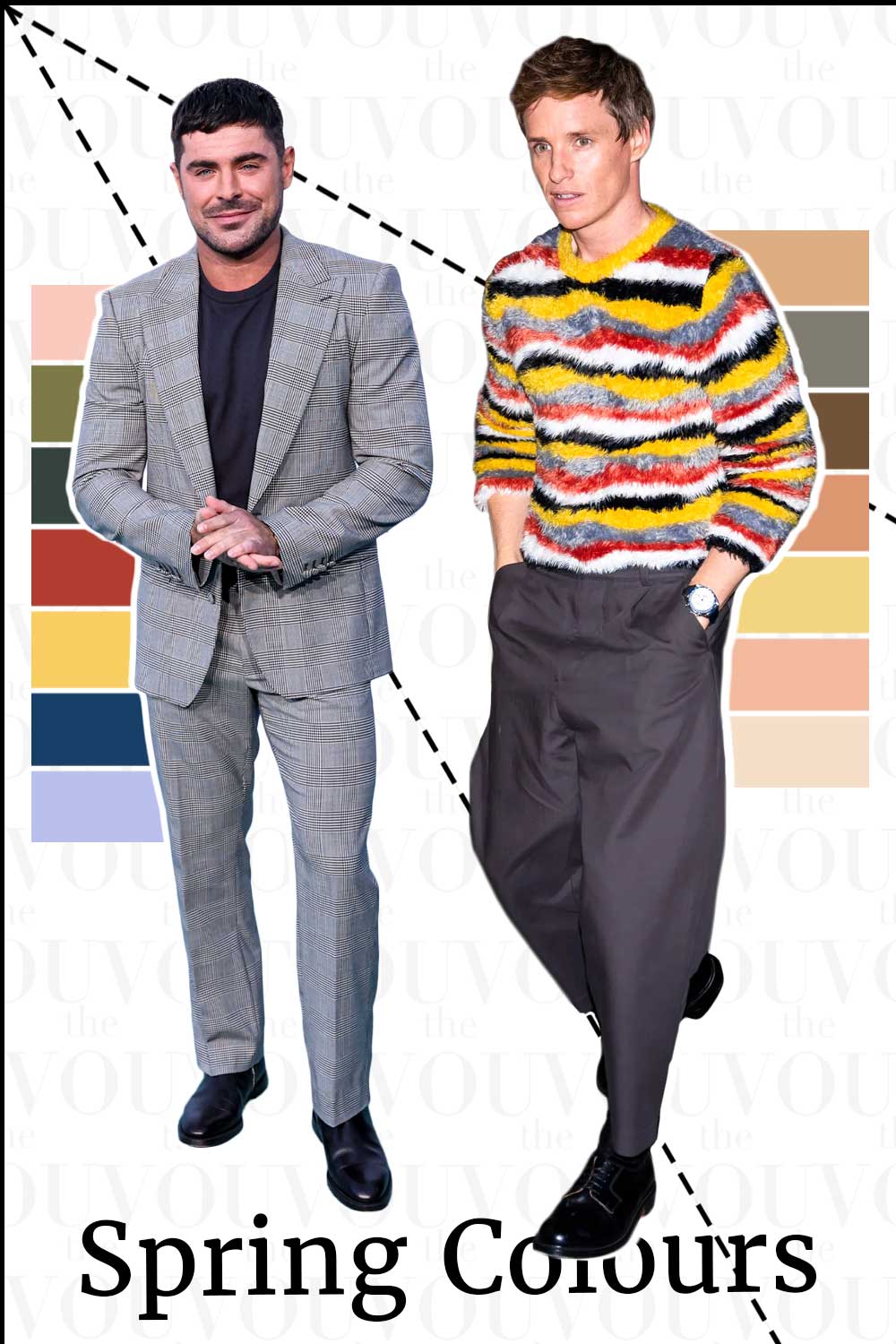
The Spring palette is defined by warm, golden undertones, but with a bright, clear quality that separates it from Autumn.
Men in this category often have golden blonde, light brown, or strawberry blonde hair. Their skin is typically fair with a peachy or creamy tint, and they may have freckles. Eyes are often bright blue, green, or light brown.
Your colours are clear, vibrant, and energetic. You excel in shades like bright coral, turquoise, warm greens, and sunny yellows. Avoid dark, heavy colours, which will overshadow your natural brightness.
How to Find Your Colour Palette Without a Professional
Determining your season requires a systematic approach. Follow these three steps in a room with ample natural light for the most accurate results.
Remove any headwear and ensure your face is clean. This is about analysing your natural state, not your current attire.
Analyse Your Skin’s Undertone
Your undertone is the constant, subtle colour beneath your skin’s surface. It is either cool (blue-based), warm (yellow-based), or neutral.
First, perform the vein test. Examine the veins on the inside of your wrist. If they appear distinctly blue or purple, your undertone is cool. If they look greenish, your undertone is warm. If you cannot definitively tell, you are likely neutral.
Next, use the white paper test. Hold a piece of crisp white paper next to your face. If your skin appears pinkish or rosy in comparison, you are cool-toned. If it looks more yellow or golden, you are warm-toned.
Cool undertones point towards Winter or Summer, whilst warm undertones indicate Autumn or Spring.
Evaluate Your Natural Hair And Eye Colour
The next step is to assess the level of contrast and the temperature of your features.
Contrast refers to the difference between your skin, hair, and eye colour. A man with dark brown hair and fair skin is high-contrast (Winter). A man with ash blonde hair and fair skin is low-contrast (Summer).
Temperature relates to the warmth or coolness of your features. Hair with golden, red, or coppery tones is warm (Autumn, Spring). Hair with ashy, silver, or blue-black tones is cool (Winter, Summer).
Combine this with your undertone analysis. Cool undertones plus high contrast equals Winter. Cool undertones plus low contrast equals Summer. Warm undertones plus muted colouring equals Autumn. Warm undertones plus bright colouring equals Spring.
Use A Free Colour Palette App
For a final, data-driven confirmation, leverage technology.
Numerous free applications exist that specialise in personal colour analysis. These tools typically require you to upload a clear photograph of yourself, taken in natural daylight without shadows.
The app’s algorithm will then analyse the pixels of your skin, hair, and eyes to determine their properties and assign you a seasonal palette.
Use this as a digital second opinion to validate the conclusions you have drawn from your manual analysis. It is an efficient way to confirm your findings with precision.
Actionable Style Guidance
Knowledge without application is useless. Identifying your colour palette is only the first step; the real work lies in deploying it strategically to construct a powerful and cohesive personal brand.
Every item you purchase must now be viewed through the lens of your personal palette. This is how you transition from a man with clothes to a man with style.
Building Your Wardrobe
Begin with the foundations. Your core neutrals should be drawn directly from your seasonal palette. These are the colours you will use for major investments; think suits, overcoats, trousers, and foundational knitwear.
For a Winter, this means black, navy, and charcoal grey. For an Autumn, it means deep brown, olive, and camel.
Once your neutral base is established, introduce your palette’s primary and accent colours through shirts, jumpers, and polo shirts. This creates a wardrobe where every single item is guaranteed to harmonise, making dressing well an effortless, systematic process.
Selecting Accessories
Accessories are the final, critical detail. They must also adhere to your colour season, particularly metals.
Cool-toned men (Winter, Summer) should exclusively wear silver, platinum, or white gold. These metals will complement your skin. Gold will create a jarring, unhealthy-looking contrast.
Warm-toned men (Autumn, Spring) should opt for gold, bronze, or copper. These metals will enhance your natural warmth. Silver will appear cold and sterile against your skin.
Apply this rule to your watch, cufflinks, belt buckle, and any other metallic hardware. For ties, pocket squares, and scarves, use the bolder accent colours from your palette to add a point of interest that remains perfectly in sync with your overall look.
A passionate advocate for inclusivity and diversity, Aidan is the driving force behind The VOU as its Editorial Manager. With a unique blend of editorial acumen and project management prowess, Aidan's insightful articles have graced the pages of The Verge, WWD, Forbes, and WTVOX, reflecting his deep interest in the dynamic intersection of styling with grooming for men and beyond.


